-
Popular Bird Feeders for Fall Migration
Birds Favorites… for Beating Summer Sizzle!
It may not even be a bird feeder at all, but actually your bird bath! Moving water stays fresher and it’s ideal for all birds, in the garden with or without the birdbath! Solar bubblers and fountains, leaf misters, water wigglers or drippers benefit both hosts and birds by preventing stagnant water. Birds who may not visit feeders will flock to gently moving water for a sip, dip and cleanliness.Whether birds stay or go (resident vs. migratory)… hydration and clean feathers are a must for all feathered friends!
Both songbirds and butterflies adore leaf misters (amphibians too). Some birds will eagerly sit and wait for them to start on scorching days!
With versatile and easy ways to use them, you can place a mister right in the garden for leaf-bathing, over a bird bath, attached to a branch or even a simple plant stake.
Mesmerizing Migration: Watch 118 Bird Species Migrate Across a Map of the Western Hemisphere (courtesy Cornell Lab)
Migrations are exciting times for backyard birders and feathered friends. In fall migratory birds are returning to their summer breeding grounds, but don’t forget resident birds who brave our harsh winters.
Keep Resident Birds Around!
Cardinals, bluebirds, chickadees, nuthatches, finches and others benefit greatly from native shrubs and trees. Heated birdbaths, seed, suet & peanut bird feeders plus roosting spots really do help them survive cold weather.
While temps are cooling and it’s prime time for planting, remember that native plants require less maintenance… so do keep birds in mind whenever possible! A few suggestions? Take a peek at this great article (with pics) from American Bird Conservancy. https://abcbirds.org/blog/native-trees-shrubs-attract-birds
Carb-Loading Hummingbirds and Orioles
Keep feeders fresh and full for those headed south to Central and South America… it’s a very long flight! Migrating birds face a difficult journey ahead and many won’t survive the trip. Every calorie gained and stored for energy is crucial. Think nectar and jelly feeders here.
Bullies: Reduce territorial scuffles among tiny sprites with additional smaller feeders. If you’ve purchased the Triple Orb (or thinking about it) separate the feeders to make it easier for more birds to feed. Remove these lids for winter use and entice resident birds with meal worms, suet, shelled peanuts and more!
Ants: Simply use an ant moat to end this headache! One ant spoils a whole feeder full of fresh nectar 🙁
Bees: They can make it impossible for hummingbirds to feed… but they gotta eat too! Simply offer them food away from hummingbird feeders. This summer we’ve found that jelly works great! Use in a small hanging dish feeder; bees, yellow-jackets and wasps have steered clear of hummingbirds feeders in favor of jelly!
Nectar Aid is back and it changes your game – no excuses now for not making your own nectar! It’s the fastest and easiest way without measuring or utensils. Mix it, heat it if preferred (to quickly dissolve sugar) and store it all in the same pitcher.
1:4 Ratio (sugar to water)
Pure Cane Sugar Only! Raw and brown sugar contain high iron levels which may be dangerous for hummingbirds’ delicate systems. Hey, we believe the sprites prefer home made over commercial mixes anyway!Still Getting Bugged?
Pesticides and chemicals are just passe’- they’re bad for everyone & everything. Your outdoor gatherings can be bug-free with natural citronella coils. Long burn time and fun to use… they deter flies, gnats and mosquitoes naturally!
-
How to Keep Bees Off Your Hummingbird Feeders?
So the bee-proof feeder ports don’t seem to work, bees are keeping hummingbirds away… what’s one to do? Being almost mid-August, hummingbirds in the eastern US will soon start their southern migration, fueling up and fattening up is crucial for their long journey. Feeders need to be clean, nectar kept fresh and most of all… sans the bees!
We follow a few birding groups on social media and the big buzz right now is bees at hummingbird feeders. Everyday, the question is posed hundreds of times with some pretty good (and not so good) answers.
Believe it or not, hummingbird nectar is not their first choice for food. The key here being food… so feed them! Perfectly logical, right? Obviously bees are seeking sweets…. like so many of us at 1:30 AM 🙂
Since you can’t remove bees from the garden (and really shouldn’t anyway) simply offer sustenance in lieu of your hummingbird feeder. Jelly has worked beautifully for us, a very thick sugar syrup works fine too.
Fancy feeder not required, a small plant saucer is ideal for either application. Place a few spoonfuls of jelly in the saucer and set near hummingbird feeders. Once discovered by bees (about 5 seconds) gradually move the saucer further away. Want to hang the impromptu jelly feeder? Poke three holes in a plastic plant saucer, use wire or string and hang from a branch. A hanging votive holder is perfect too.
For the sugar mixture: Equal parts sugar & water creates a very thick and wonderful food source for bees. Use marbles, rocks or pebbles to line the bottom of plant saucer so bees have easy and safe access. Pour mixture so that rocks or or marbles are still above food level and place near your hummingbird feeders. Within seconds… bees will migrate to this new food source.
With the bee problem solved, the last thing you’ll want is ants! That’s pretty easy to avoid as well. If your new saucer feeder is hanging… simply use an ant moat. If the saucer is set on a table or object, place it inside a larger saucer containing water. Be sure the edges of smaller saucer do not touch the outside edges of water saucer. This creates an ideal ant moat to keep pests away from food.
It’s really that easy to thwart bees from hummingbird feeders!
•Jelly or a thick sugar mixture as food
•Small plant saucer to hold food
•Rocks, pebbles or marbles to line the saucer
•String or wire to hang the saucer
•Slightly larger saucer with water to create a moat (if not hanging).Should you prefer less fuss, these orb feeders or any jelly feeder works wonders too!
-
Hummingbird Feeder Hacks for Ants, Wasps and More
From ants and wasps to leaky feeders and wasted nectar… what’s one to do in order to avoid these common hummingbird feeder pitfalls?
Once again we went from Mother’s Day to Father’s Day without posting. Instead of celebrating Dad this year, Happy Father’s Day to All, we’d rather offer some useful hacks pertaining to common problems with hummingbird feeders. By the way, they do make swell gifts for dads who dig birds!
Wasps and Yellow Jackets: Hummingbirds despise them and the secret is in the ports! Since sugar water has no aroma, it’s the feeder itself which may be attracting them, namely the sticky nectar near feeder ports. Keep your hummingbird feeder from swaying because the motion allows nectar to accumulate on the outside of the feeder. This is just one reason we prefer glass hummingbird feeders- for the weight. You can also take the feeder down for a few days until pests dissipate and hang in new location.
Not all plastic feeders are crated equal. Dr. JB’s feeder for example has years of research and testing behind the bee-proof feeder! Specially designed ports actually prevent seeping nectar and bees. It’s received wonderful reviews over the years as well, although after 11 years we’ve just recently started collecting and publishing reviews. Duh! Offered with the red hummer helmet, sprites will surely find this easy to clean hummingbird feeder in no time flat!
The jury’s still out with this hack for wasps around your hummingbird feeder (about 50/50 according to hummingbird groups on social media). A brown crumpled paper bag hung near the feeder may deter wasps. Resembling a hive, wasps will steer clear if not their own digs. Fake or imitation hives are available for purchase online as well.
Ants: They’ll ruin a brand new refill of fresh nectar in seconds. Secreting something that must taste really awful, hummingbirds simp
ly will not drink nectar with even one ant floating inside!
This fix is really simple… use an ant moat with your hummingbird feeder! Some moats use chemicals on the underside, we prefer those using water. Smaller birds may even be spotted drinking from ant moats filled with fresh water. An inexpensive, one-time purchase will spare your nectar and the headache of ants in your feeder simply because ants can’t swim!
Wasted Nectar: Don’t fill your your feeder to the top! Hummingbirds’ tongues are extremely long, wrapping around their skull when fully retracted. Aside from their long beaks, tongues are 1.5 times the length, allowing them to lap nectar from deep within flowers. Nature equipped the sprites accordingly!
In addition, make your own nectar because it really is simple! Once you do for the first time, you’ll scratch your head ask yourself “why didn’t I do this before?”. Now if you ask 3 people- you may get 3 different answers, but the ratio is always 1:4 and cane (not beet) sugar is preferred.
Here’s our take:
1 Cup plain table sugar to 4 Cups water… that’s it and NOTHING ELSE, ever!No need to boil water, though boiling 1 cup dissolves sugar quickly and effectively. Add 3 Cups of cold water and there’s no cooling time. Store remainder in fridge for up to two weeks. During extreme heat, nectar must be changed every 1 to 2 days as sugar ferments quickly. Should this commitment become a pain or too time consuming, it’s best to take your hummingbird feeder down and concentrate on nectar-producing flowers to feed hummingbirds naturally. Leaving a feeder with old nectar is definitely wasteful as sprites will avoid nasty food. Aside from flowers, leaf misters, solar bubblers, drippers or any feature providing moving water will entice birds, especially during the long and hot dog days of summer… here in Atlanta anyway!
Leaky Feeders: Try a top-fill feeder sans any base. Parasol’s glass hummingbird feeders in blossom, bloom or bouquet styles will not leak or drip… ever! There’s no seams or attachments for nectar to seep through. Aside from being beautiful garden art, they’re handmade in Mexico from recycled glass.
If using the tube style hummingbird feeders and dripping nectar is a problem, move the feeder to shade. Rubber stoppers may contract and expand in heat/full sun. These feeders also work on a vacuum principle, meaning there can be no air inside the vessel. Try filling the feeder completely (in the sink with plain water) to see if this alleviates dripping. You can also opt for replacing the tube itself. Some tubes contain a tiny steel ball-bearing which helps stop leaking.
Flowers: Always plant native for best results to offer birds food and shelter, it’s a win-win situation. Checkout Audubon’s Plant Database for recommendations on your locale, just enter your zip code and the list returns shrubs, trees, vines and the best nectar producing flowers for your area.
When purchasing from big box garden centers, you may want to steer clear of this tag. We’ve removed the store name as a social media post was recently censored (bummer).
The buzz around town is this chemical is harmful to bees- so one must ponder if it’s not equally harmful to all pollinators as well?
Since butterflies, bats, bees and hummingbirds all feed from the same flowers… we’ll let you be the judge.
We hope at least one of the above hummingbird feeder tips might be helpful. Whether you’re novice or advanced back yard birding fanatic… happy summer and birding 🙂

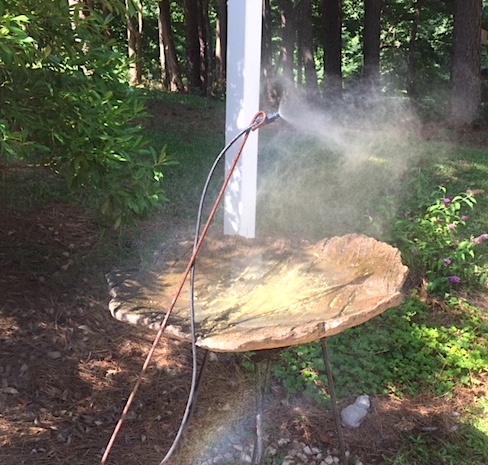
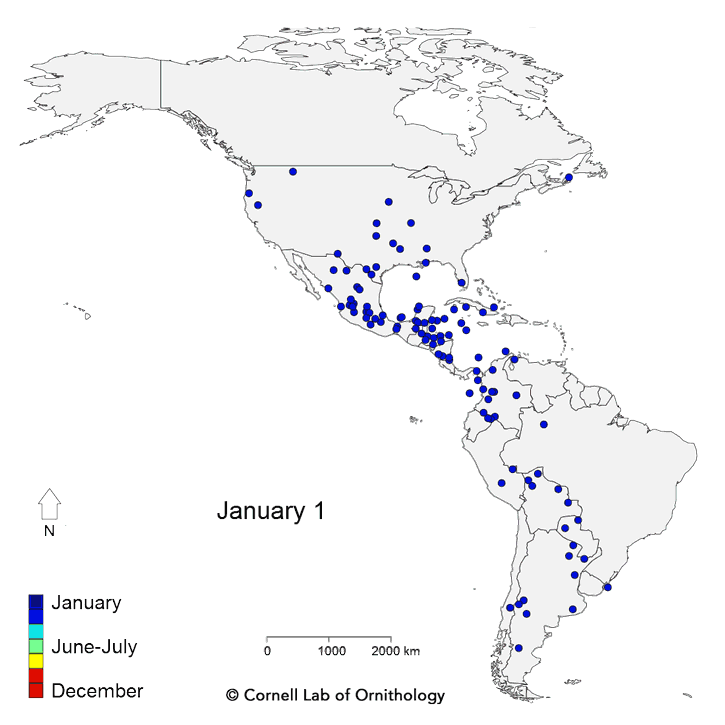
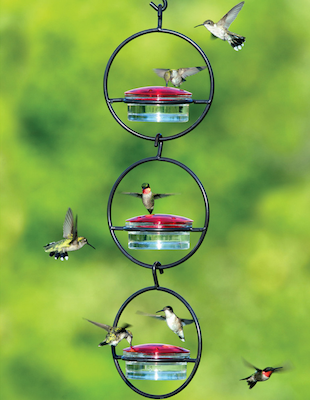
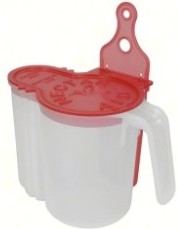
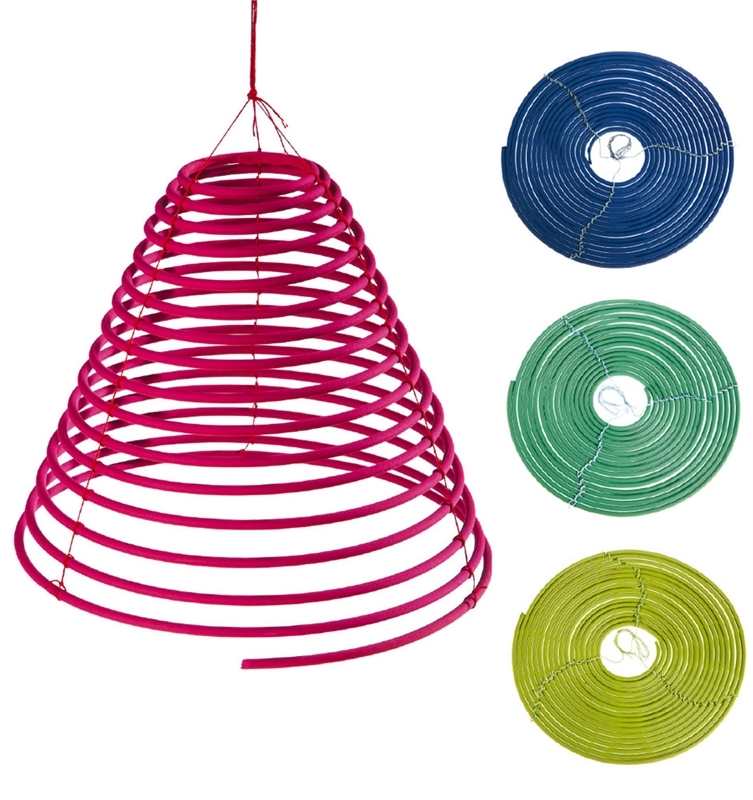
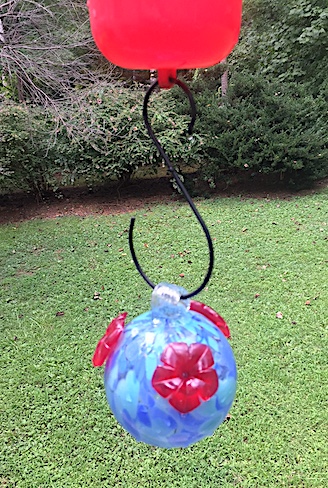 So the bee-proof feeder ports don’t seem to work, bees are keeping hummingbirds away… what’s one to do? Being almost mid-August, hummingbirds in the eastern US will soon start their southern migration, fueling up and fattening up is crucial for their long journey. Feeders need to be clean, nectar kept fresh and most of all… sans the bees!
So the bee-proof feeder ports don’t seem to work, bees are keeping hummingbirds away… what’s one to do? Being almost mid-August, hummingbirds in the eastern US will soon start their southern migration, fueling up and fattening up is crucial for their long journey. Feeders need to be clean, nectar kept fresh and most of all… sans the bees!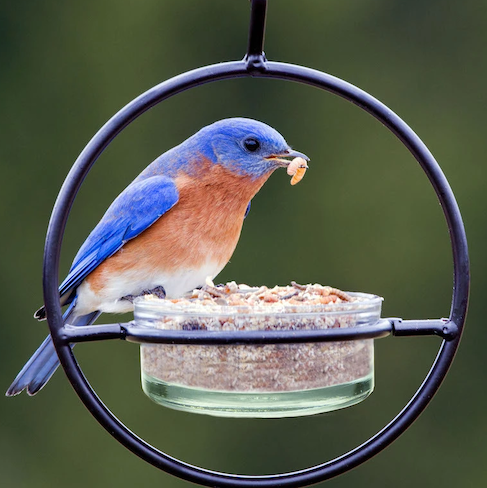
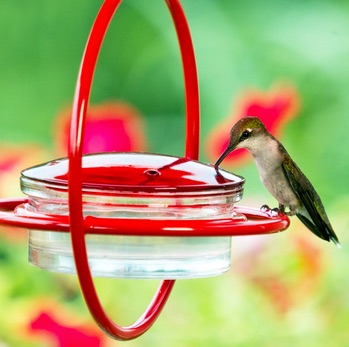 From ants and wasps to leaky feeders and wasted nectar… what’s one to do in order to avoid these common hummingbird feeder pitfalls?
From ants and wasps to leaky feeders and wasted nectar… what’s one to do in order to avoid these common hummingbird feeder pitfalls?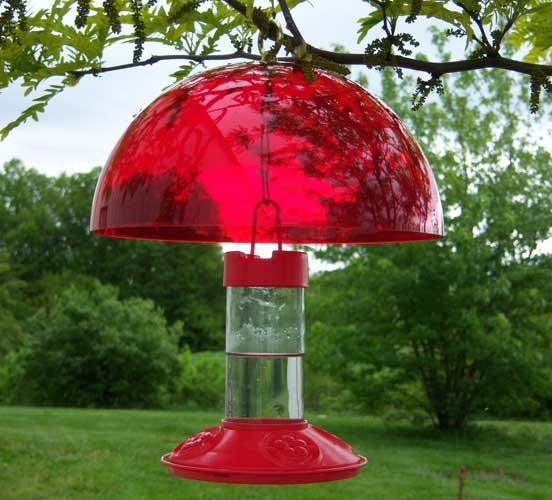
 ly will not drink nectar with even one ant floating inside!
ly will not drink nectar with even one ant floating inside!
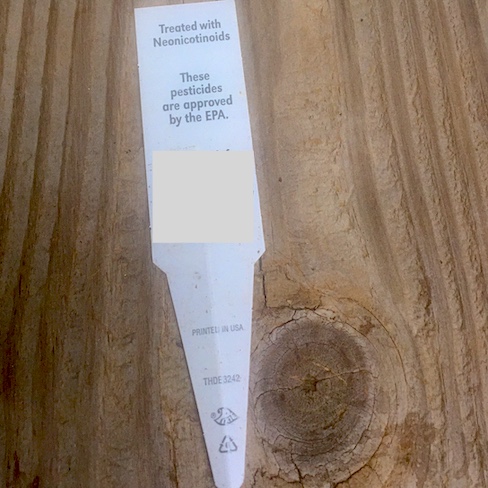 When purchasing from big box garden centers, you may want to steer clear of this tag. We’ve removed the store name as a social media post was recently censored (bummer).
When purchasing from big box garden centers, you may want to steer clear of this tag. We’ve removed the store name as a social media post was recently censored (bummer).